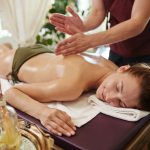Experience the rich history and artistry of British textile dyeing through interactive workshops designed for tourists. Immerse yourself in hands-on learning, mastering techniques that have been passed down through generations. These workshops not only educate but also connect you to the cultural heritage of the UK. Engage with skilled artisans and create your own unique fabric masterpieces. Discover how these vibrant colors and patterns tell captivating stories, making your trip unforgettable. Join us as we explore this vibrant tradition.
Overview of Traditional British Textile Dyeing
Traditional British textile dyeing holds a rich historical context and is deeply intertwined with the nation's cultural fabric. Dating back to ancient times, the practice of dyeing textiles in Britain has evolved through centuries, reflecting both the technological advancements and cultural shifts of the era. Initially, natural dyes derived from plants, insects, and minerals were predominantly used, each offering a unique palette of hues.
Have you seen this : Discover the Top Immersive Experiences in Authentic British Cider Brewing in the West Country
The cultural significance of textile dyeing in Britain cannot be overstated. It was not only a crucial part of everyday life but also an essential industry that contributed significantly to the economy. Dyeing techniques and colours often held symbolic meanings, representing social status or regional identity. For example, the famed woad plant was a significant source of blue dye and a symbol of wealth and prestige.
Traditional techniques were diverse, ranging from immersion dyeing to resist dyeing, where patterns were created by preventing dye from reaching certain areas of the fabric. Materials such as wool and linen were commonly used, each requiring specific dyeing methods to achieve the desired results. The mastery of these techniques was a revered skill, passed down through generations, ensuring the preservation of this cultural art form.
Have you seen this : Everything you should know about the usa tourist visa
Interactive Workshops for Tourists
Engage in immersive experiences through textile dyeing workshops, where hands-on learning meets rich tradition. These workshops provide an opportunity for tourists to explore the intricate art of traditional British textile dyeing.
Types of Workshops
Workshops cater to a variety of skill levels, from beginner to advanced. Beginners can enjoy introductory sessions focusing on basic techniques and the history of textile dyeing. Intermediate classes delve deeper, offering more complex methods like resist dyeing. Advanced workshops challenge participants with intricate designs and the use of rare natural dyes.
Locations of Workshops
Various regions across Britain host these engaging workshops. The Cotswolds, known for its picturesque landscapes, offers workshops in charming studios. In London, notable artists open their studios to share their expertise. The Lake District, with its rich history in textile production, also provides unique opportunities to learn from skilled artisans.
Duration and Costs
Workshops typically range from a few hours to several days. Shorter sessions offer a taste of the craft, while extended workshops allow for a comprehensive experience. Costs vary depending on duration and materials, generally ranging from £50 for a half-day session to £300 for a multi-day course, often including all necessary materials.
Participant Testimonials
Engaging in traditional British textile dyeing workshops offers invaluable workshop experiences that participants cherish. Many attendees express how these sessions have significantly impacted their skills and appreciation for the craft. One participant noted, "The workshop was a transformative experience," highlighting the profound personal growth achieved through hands-on learning.
Participant feedback often praises the immersive nature of the workshops. Attendees appreciate the opportunity to learn directly from skilled artisans, gaining insights into age-old techniques. A recent participant shared, "The instructors were incredibly knowledgeable and patient, making the learning process enjoyable and enriching."
These workshops also foster a deepened appreciation for the craft. Many participants leave with a newfound respect for the intricate art of textile dyeing, understanding the cultural and historical significance behind each technique. One success story involved a participant who, after attending several sessions, launched a small business selling dyed textiles, attributing their success to the skills acquired during the workshop.
For future attendees, participants recommend approaching the workshops with an open mind and a willingness to learn. They advise, "Immerse yourself fully in the experience, and don't be afraid to experiment." This mindset ensures that each participant maximises their learning and enjoyment.
Booking and Travel Information
Planning your visit to a traditional British textile dyeing workshop requires thoughtful consideration of booking options and travel logistics. Ensuring a smooth experience involves understanding the best times to visit, transportation options, and additional activities to enhance your trip.
How to Book a Workshop
Booking a workshop can be straightforward with the right steps. Start by exploring various online platforms dedicated to booking options for these workshops. Websites often provide detailed schedules, allowing you to reserve a spot conveniently. Contact information is typically available for any queries or special requests. It is advisable to book in advance, especially during peak seasons, to secure your preferred dates.
Travel Tips
Timing your visit is crucial for an optimal experience. The best times to attend workshops are during spring and autumn when the weather is mild, enhancing the overall enjoyment. Transportation options vary by location; trains and buses are popular choices for reaching rural areas like the Cotswolds or the Lake District. For London-based workshops, public transport or taxi services offer convenient access.
Additional Activities
Complement your workshop experience with other cultural experiences related to textile arts. Many regions offer museum tours or local craft fairs. Additionally, explore nearby attractions such as historic sites or scenic walks to enrich your visit, providing a well-rounded cultural adventure.
The Future of Traditional Textile Dyeing
The landscape of textile dyeing is evolving, with modern applications finding a balance between innovation and tradition. As the industry shifts, there is a growing emphasis on sustainability, integrating eco-friendly practices with age-old techniques.
Current Trends and Sustainability
Contemporary dyeing trends focus on reducing environmental impact. This involves using natural dyes and sustainable materials, aligning with increasing consumer demand for eco-conscious products. Modern applications often incorporate technology to enhance efficiency while maintaining the integrity of traditional methods.
Sustainability is at the forefront, with many artisans and manufacturers adopting practices that minimise waste and pollution. This includes the use of renewable resources and closed-loop systems that recycle water and materials. By prioritising sustainability, the industry not only preserves the environment but also adds value to the craft.
Preserving Traditions
Efforts to keep traditional techniques alive are crucial. Many workshops and educational programs are dedicated to teaching these skills to new generations. This ensures that the rich heritage of textile dyeing is not lost amidst modernisation. By blending tradition with innovation, the future of textile dyeing remains vibrant and relevant, honouring its historical roots while adapting to contemporary needs.
Resources and Further Reading
Exploring traditional British textile dyeing can be further enriched by delving into textile arts resources and seeking additional learning opportunities. These resources offer a deeper understanding and appreciation of the craft.
Recommended Books and Articles
To gain a comprehensive insight into textile dyeing, consider exploring a curated selection of books and articles. These suggested readings provide valuable perspectives on the history, techniques, and cultural significance of textile dyeing:
- "The Art of Natural Dyeing" by Jenny Dean offers a detailed exploration of natural dye sources and methods.
- "Textiles: A World Tour" by Catherine Legrand provides a global perspective on traditional textile practices, including British dyeing.
- Articles from "Textile History" journal frequently cover the evolution and impact of British textile arts.
Engaging with these resources can enhance your understanding and inspire further exploration.
Online Communities and Forums
Connecting with fellow enthusiasts through online communities and forums can be invaluable for sharing experiences and gaining insights. Platforms such as Reddit's "Textile Arts" community and the "Natural Dyeing" group on Facebook offer spaces for discussion and support. These forums focus on dyeing techniques, providing a platform for exchanging ideas and advice. Engaging with such communities fosters a collaborative learning environment, enriching your journey in the world of textile arts.
















